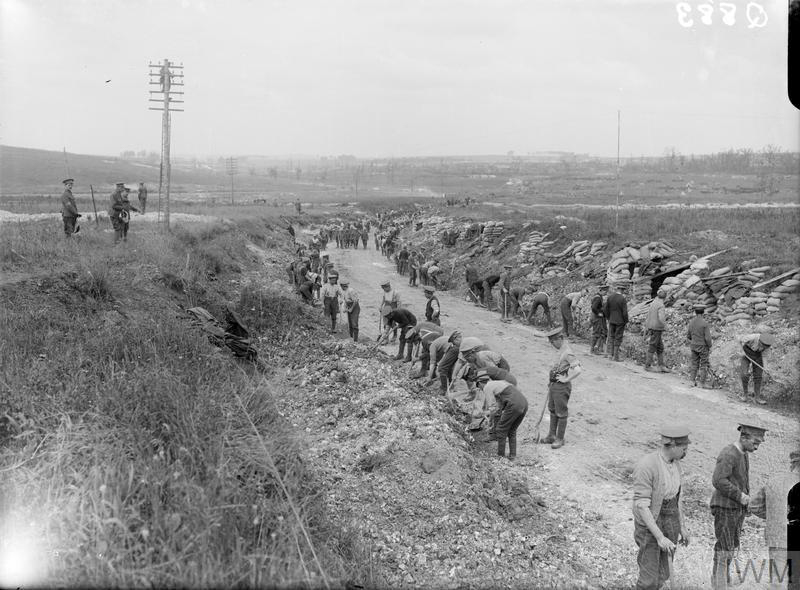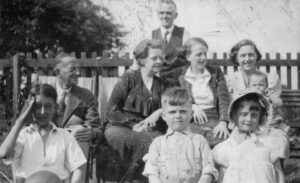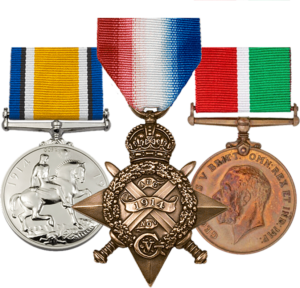William enlisted into the army on 11 December 1915 but was not mobilised for another six months. He was given service number 48276 and described as 5 feet 8 inches tall, weighing 133 lbs, and having a well-marked ‘RLs’ of left leg. He joined the 20th (Labour) Battalion, Sherwood Foresters (Nottinghamshire & Derbyshire Regiment). The army in France and Flanders had a huge demand for labour to build and maintain the network of roads, railways, canals, buildings, camps, stores, dumps, and telegraph and telephone systems etc. Some infantry divisions had a battalion that was trained and capable of fighting as infantry, but that would usually be engaged on labouring work. They were normally composed of men who were experienced with picks and shovels (i.e. miners, road men, etc) and some who had skilled trades (smiths, carpenters, joiners, bricklayers, masons, tinsmiths, engine drivers and fitters).
The Battalion sailed from Southampton to Le Havre in mid-June 1916. It appears that William contracted trench fever in February 1917 and was treated in France before being transferred to the Military Hospital Trent Bridge, Nottingham where he stayed until 7 March. Trench fever was a moderately serious disease transmitted by body lice that infected the armies in Flanders and France. Up to one fifth of all British and German troops had the disease.
William never returned to France and instead was transferred to the 500th (Home Service) Employment Company of the Labour Corps (service number 262729) in June 1917. Formed earlier in the year, the Corps eventually grew to some 389,900 men with almost half serving at home. It was manned by those medically rated below the ‘A1’ condition needed for front line service, and often included those previously injured in the field. Few records of the Corps remain.
William transferred to the 169th Protection Company, Royal Defence Corps (service number 81617) on 30 June 1918. The Corps undertook duties connected with the local defence of the United Kingdom, guarding important locations such as ports or bridges as well as prisoner of war camps. The 169th was part of Northern Command. William was examined in preparation of his discharge in January 1919. The handwriting is difficult to decipher, but it looks as if he was attempting to claim for varicose veins caused by his wartime service, but this was dismissed. He was discharged from the army into Class Z Reserve in March 1919.
Units
- 20th (Labour) Battalion, Sherwood Foresters (Nottinghamshire and Derbyshire Regiment) (1916-1917)
- 500th Home Service Employment Company, Labour Corps (1917-1918)
- 169th Protection Company, Royal Defence Corps (1918-1919)
Medals





